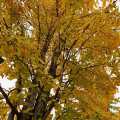老师,这几个单词怎么理解?
查看病例
Many have proposed alternative grading systems to better describe spinal stenosis. On sagittal images, compromise of neural structures can be inferred by noting degree of CSF obliteration and structural impingement of the spinal cord. Abnormal signal of the spinal cord, crowding of nerve fibers, and redundancy may also provide useful information [9]. Pfirrmann and colleagues created a grading system for disc herniation-related nerve compromise, correlating with intraoperative findings. This scheme uses four grades based on displacement, contact, and compression of neural structures [25]. Schizas and colleagues have described a grading system of CSF-to-rootlet ratio [26], whereas Barz and colleagues have described sedimentation of the nerve roots in the dural sac [27]. However, neither of these two grading systems correlates with functional status, symptomology, or outcomes.
为了更好地描述椎管狭窄,许多学者提出了替代分级系统。在矢状面上,可以通过观察CSF的闭塞和脊髓的结构受压程度来推断神经结构是否累及。其次脊髓异常信号、神经纤维拥挤、冗余也可提供有用信息[9]。Pfirrmann和他的同事根据术中观察的情况建立了一个与椎间盘突出症相关的神经损伤分级系统。该方案基于神经结构的位移、接触和压缩,分了四个等级[25]。Schizas及其同事提出了CSF与神经根比例的分级系统[26],而Barz及其同事描述了硬膜囊中神经根的沉积[27]。然而,这两种分级系统均与功能状态、症状学或结果无关。
最后编辑于 2022-10-09 · 浏览 480
















































